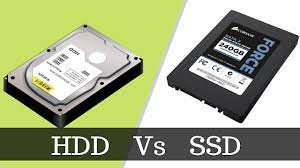

SSD vs. HDD
In the realm of data storage, two technologies reign supreme: Solid State Drives (SSD) and Hard Disk Drives (HDD). Understanding the SSD HDD difference is crucial for anyone looking to optimize their computer’s performance, reliability, and storage capabilities. This article delves into the nuances of SSD and HDD, offering insights into how each technology can influence your computing experience.
What is an SSD?
An SSD, or Solid State Drive, is a type of data storage device that uses integrated circuit assemblies to store data persistently. Unlike HDDs, SSDs have no moving parts, which contributes to their faster data access times, higher reliability, and reduced susceptibility to physical shock.
What is an HDD?
An HDD, or Hard Disk Drive, is a traditional storage device that uses mechanical platters and a moving read/write head to access data. HDDs have been the standard for data storage for decades, offering large storage capacities at a lower cost per gigabyte than SSDs.
Speed and Performance
When it comes to speed and performance, SSDs have a clear advantage over HDDs. The absence of moving parts in SSDs allows for quicker data access times, significantly reducing boot times, file transfer speeds, and the 뉴토끼 최신주소 overall responsiveness of your computer. SSDs can enhance the performance of applications that require rapid data retrieval, such as video editing software, games, and high-load computing tasks.
Durability and Reliability
SSDs are more durable and reliable than HDDs due to their lack of mechanical parts. This makes them better suited for laptops and mobile devices that are more likely to experience movements and shocks. Additionally, SSDs generate less heat and are quieter during operation, contributing to a more comfortable computing environment.
Storage Capacity and Price
While SSDs excel in speed and reliability, HDDs continue to offer more storage capacity for a lower price. For users requiring vast amounts of storage for files, videos, and applications, HDDs provide a cost-effective solution. However, the price gap between SSDs and HDDs is gradually narrowing, making SSDs an increasingly viable option for high-capacity storage needs.
Use Cases
Choosing between an SSD and an HDD depends on your specific needs and usage scenarios. For high-performance computing, gaming, and professional applications requiring speed, an SSD is the preferred choice. Conversely, for archival purposes, media libraries, and situations where storage capacity takes precedence over speed, an HDD may be more suitable.
Hybrid Solutions: The Best of Both Worlds
For those seeking a balance between speed and storage capacity, hybrid solutions, such as combining an SSD for the operating system and frequently used applications with an HDD for mass storage, can provide an optimal setup. This configuration allows users to benefit from the rapid performance of an SSD while still having access to large storage capacities of an HDD at a lower cost.
Future Trends
The landscape of data storage is continuously evolving, with SSD technology advancing in terms of capacity and cost-efficiency. As SSDs become more accessible, they are likely to become the standard for both personal and enterprise computing, relegating HDDs to niche applications or as secondary storage options.
Conclusion
The SSD HDD difference highlights a crucial choice in data storage technology. SSDs offer superior speed, durability, and reliability, making them ideal for performance-oriented applications. Meanwhile, HDDs provide cost-effective solutions for extensive storage requirements. Understanding these differences enables individuals and organizations to make informed decisions that align with their performance needs and budget constraints.